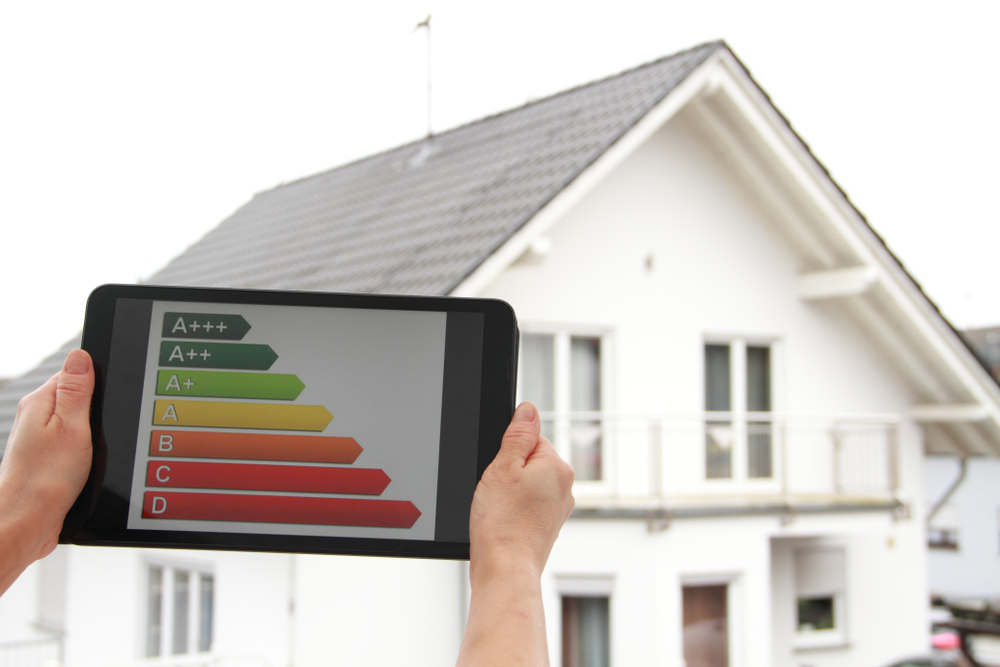Household Bills
Upgrading homes to EPC grade C could add £56,000 to your property

Sellers who have improved their home from an EPC rating of F to a C can command an average price premium of £55,786 on top of local house price growth, a report has said.
According to Rightmove’s Greener Homes report, this is considering the national average asking price of £371,907.
If the EPC rating was changed from E to C then a green price premium of £26,603 could be added and if the EPC rating moved from D to C then £11,157 could be applied.
The report added that listings that mentioned EPC ratings had jumped by a nearly a quarter compared to last year and were 59% up on 2019 figures.
Rightmove said EPC ratings were becoming increasingly important with 19% of renters and first-time buyers saying energy efficiency will be a major factor in choosing a property due to energy bills.
Around 13% of homeowners planning to move in the next year said energy efficiency would be a significant factor in their decision.
Upgrading all houses for sale to C rating could take over 40 years
The report said “some progress” had been made over the past four years, but it could be decades before all homes for sale and rent hit an EPC rating of C or higher.
Based on current progress, it would take 43 years for all houses for sale to reach an EPC of C or higher and 25 years for flats for sale to reach the same benchmark.
On the rental side, it would take 31 years for houses to reach an EPC C rating based on the current rate of progress and 16 years for flats.
The report added that 60% of homes for sale on Rightmove – and 50% of homes available to rent – have an EPC rating of D or below.
Approximately 78% of homeowners said saving money on energy bills would be a motivator to make green improvements.
More than half pointed to better insulating their home, and around a third said cutting their carbon footprint and adding value to their home was important.
Just over a quarter said a motivator would be selling their home in the future.
Landlords looking to sell lower EPC-rate properties
From a landlord’s perspective, Rightmove called for further clarity on EPC legislation, with comments from Secretary of State for Levelling Up Michael Gove earlier this week suggesting that legislation could be softened.
The report found that 40% of landlords with one property stated that they were more likely to sell up than improve the efficiency of their portfolio
Around a third of landlords with lower EPC-rated properties planned to sell them rather than make improvements, which is an increase of 20% compared to last year.
Approximately 61% of landlords say they would not buy a rental property below an EPC rating of C, up from 47% when asked last year.
‘Incentivisation and education is key’
The report called for stamp duty rebates if a new buyer makes green improvements in the first few years of purchase, along with more significant incentives for energy efficient homes for both new mortgages and remortgages.
It also called for more grants and tax benefits for green technology such as charging points and solar panels.
The company added that allowing new innovations to “speed up the creation and implementation of energy efficient technology” were also vital.
Tim Bannister, Rightmove’s director of property science, said “current incentives” were not “big enough to make people sit up and take notice”, adding that they were also not easy to find.
He continued: “The benefit of making green improvements can be seen in the overall premium that a seller can command. Of course, improvements that make a home more energy efficient could also mean the condition improves, such as installing new windows, and so owners will be weighing up the cost of improvements versus the return they can get when they come to sell.
“But the end result of making improvements is not just a refurbished home worth more money, it’s also a greener home.”
Bannister said that to shift the demand “incentivisation and education is key”.
“The ‘price of cosy’, or a better-insulated home, is hard to quantify until people see how it can change how they live for the better, and they need to be able to afford it,” he noted.